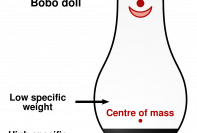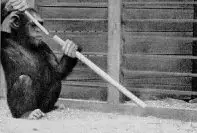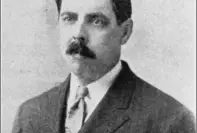Classical conditioning is a learning process first discovered by the Russian physiologist Ivan Petrovich Pavlov in the early 1900s. The discovery was accidental and happened while he was conducting experiments on digestion in dogs. His whole experiment dealt with his experiment on his dog Circa. He went on to dedicate his whole life to find out the underlying principles of Classical Conditioning and also went on to win Nobel Prize for his contribution in the field of psychology.
Classical Conditioning Theory
The theory of classical conditioning deals with the learning process leading us to gain a new behavior via the process of association. To put in simpler terms, a new learned response is produced in an individual, whether animal or person, by linking two stimuli. The classic example would be the Pavlov’s experiment, where he conditioned the dog to salivate at the sound of the bell.
What is classical conditioning Video
How classical conditioning works?
There are three stages of classical conditioning, and there are specific terms assigned to the stimuli and responses at each of those stages.
Stage 1: Before Conditioning

This is the natural stage, where the Unconditioned Stimulus (UCS) produces an Unconditioned Response (UCR) in an organism. In simpler terms, a stimulus in the environment has caused a response from an organism in an unconditioned state, completely natural. In this stage, no behavior has yet been learned and only the stimulus and response is recognized.
Example: You are presented with the smell of your favorite food. The smell will automatically trigger hunger. In this case, the smell is the UCS and hunger is the UCR.
There is also a Neutral Stimulus (NS) present at this stage which could be anything and does not produce a response until it is paired with the unconditioned stimulus.
Stage 2: During Conditioning:

This is the second stage, where the neutral stimulus (NS) is paired with the UCS, and the NS becomes conditioned stimulus (CS).
Example: An alarm is ranged at the exact time you are presented with your favorite food. Here, the alarm, previously NS, is now CS.
The trial method on this stage which involves pairing of UCS and CS might be repeated again and again for the learning process to take place.
Stage 3: After Conditioning:

The pairing of UCS and CS will now result in a creation of new response CR from the organism. The UCR now becomes CR.
Classical Conditioning Example: Let’s suppose that every time you are made to smell your favorite food, an alarm is also rung at the exact time. It’s evident that you will feel hungry having smelled your favorite food. In this case, the alarm (CS) is the conditioned stimulus which will trigger hunger (CR) when paired with the smell of your favorite food (UCS).
Classical Conditioning and Phobias
Physiologists and psychologists have decisively concluded that conditioned response can lead to emergence of phobias. It’s irrelevant if the conditioning is accidental or planned, the reaction works the same way.
One of the most popular experiments in the field of classical conditioning was done by John B. Watson on a young boy known as Little Albert, which is studied to this day as the Little Albert experiment. The experiment concludes that an organism can indeed be conditioned to show fear. In the experiment, when Little Albert was conditioned to react with the white rat, Albert then showed fear against all white objects, e.g. white fur, white dog, white rabbits and so on.
The experiment clearly illustrates how phobias can form through classical conditioning. An example of how classical conditioning works is; if a person experiences unpleasant and frightening situation with a dog, for instance, being beaten by one, it could lead to a lasting phobia with dogs.
Components of Classical Conditioning
All classical conditioning examples and process must and does follow the basic principles of Classical conditioning. There are, in total, five major principles (processes) of classical conditioning. They are:
- Acquisition
It’s the first step to classical conditioning method. This is the step by which an organism learns to association involved in the method. - Stimulus Generalization
Generalization is understood as the process which leads an organism to produce behavior identical to the CR, when confronted with a stimulus similar to the CS. - Stimulus Discrimination
This is the process that explains the ability of an organism to learn the difference between different stimuli and respond only to the conditioned stimulus. - Extinction
Extinction is the process in which classical conditioning is undone, such that the subject does not produce CR in response to CS. - Spontaneous Recovery
The sudden response by an organism with CR in reaction to the stimulus is known as spontaneous recovery.
Applications
Classical Conditioning is a powerful learning method that has variety of applications in the modern world. With the study of this subject in detail throughout the course of history, modern psychologists have found the method to be invaluable in various areas. The method has been proved useful in order to treat medical patients. Various medical conditions like Schizophrenia, and wide number of others have been treated using the classical conditioning method.

More regular uses of the principle of this theory have been seen in military camps. Armies are trained or conditioned to react in a certain way to noise, crowd, and similar other stimuli, in order to produce a precise response. There are numerous other examples of this theory, being used unconsciously through our daily routine.
Classical conditioning has always been present in the environment ever since the inception of the universe, no matter how long ago that was, it’s just that the discovery by Pavlov has made humans aware about the new range of possibilities through this method.




